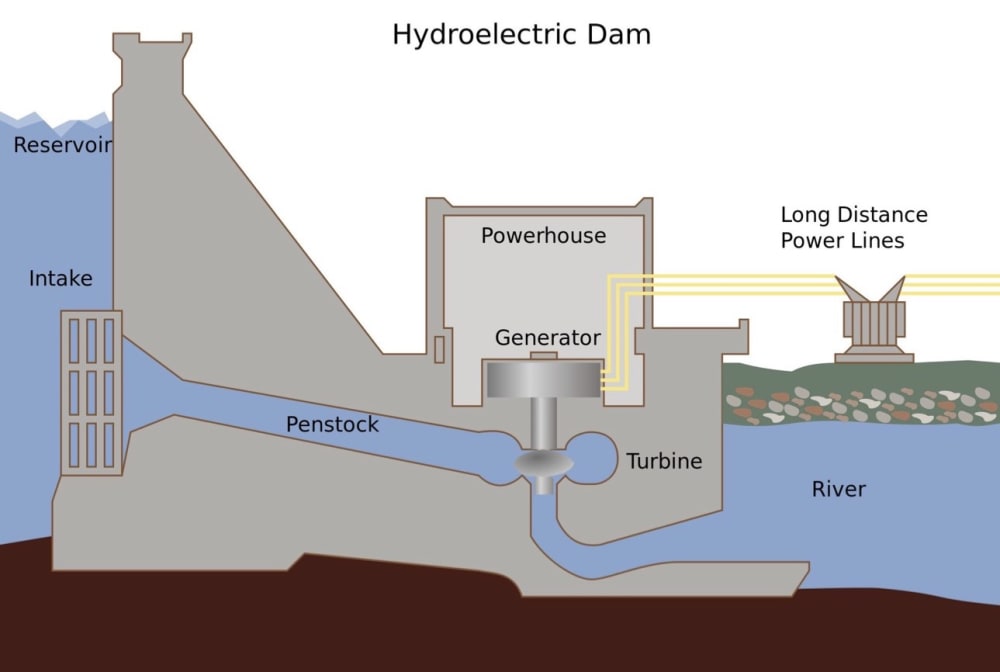This research presents a novel approach to small-scale hydroelectric power generation, employing the Chalasani Turbine within a closed-loop water circulation system. The proposed methodology aims to address the increasing demand for sustainable and decentralized energy solutions in villages, towns, and industrial settings, where traditional hydropower installations may be impractical or unfeasible.
The Chalasani Turbine, a recent innovation in hydraulic energy conversion technology, offers significant advantages over conventional turbines, including enhanced efficiency, reduced construction costs, and minimized environmental impact. By integrating this turbine into a water circulation system, we can effectively harness hydropower potential in areas with limited natural water resources or topographical constraints.
The closed-loop system comprises four primary components: an upper reservoir, a lower reservoir, the Chalasani Turbine, and a pump system. Water is released from the upper reservoir through the turbine, generating electricity, and collected in the lower reservoir. The pump then returns the water to the upper reservoir, completing the cycle and enabling continuous power generation.
Key features and advantages of the proposed system include:
- Modular design and scalability
- Minimal land footprint
- Reduced reliance on natural water sources
- Potential integration with other renewable energy sources
- Implementation of advanced control systems
- Adaptability to various geographical and climatic conditions
The study employs computational fluid dynamics (CFD) models and simulations to assess system performance under diverse operating conditions. Critical parameters such as reservoir capacity, effective head, flow rate, and turbine efficiency are analyzed to determine optimal configurations for various applications and scales of operation.
A case study focusing on a rural community demonstrates the system's potential benefits, indicating that a properly dimensioned installation can generate sufficient electricity to meet basic energy needs. The research includes an economic analysis, considering capital expenditure, operational costs, and long-term sustainability metrics.
The study addresses potential challenges and limitations, including:
- Development of efficient energy storage solutions
- Establishment of robust maintenance protocols
- Integration strategies with existing power grids or off-grid networks
- Optimization of pump efficiency
An environmental impact assessment highlights the system's advantages in terms of reduced greenhouse gas emissions, minimal ecosystem disruption, and water conservation. The closed-loop nature ensures minimal water loss through evaporation or seepage, contributing to its sustainability in water-stressed regions.
The research explores potential applications beyond rural electrification. The versatility of the Chalasani Turbine allows for its deployment in a wide range of scenarios, from micro-hydro installations to larger-scale power generation projects.
In conclusion, the hydroelectric power generation system utilizing the Chalasani Turbine in a water circulation method presents a promising solution for localized, sustainable energy production. Its adaptability makes it particularly suitable for regions lacking access to centralized power infrastructure or facing geographical constraints for traditional hydropower development.
This innovative approach has the potential to significantly contribute to the global transition towards clean energy sources, improve energy access in underserved communities, and promote sustainable development. Further research, including large-scale pilot projects and long-term performance studies, is recommended to validate the system's efficacy in diverse real-world applications and to refine its design for optimal efficiency and cost-effectiveness.
Like this entry?
-
About the Entrant
- Name:Keerthana R
- Type of entry:teamTeam members:
- NISHA M
- VIBITHAA A E
- NAVEENA D
- Patent status:none

